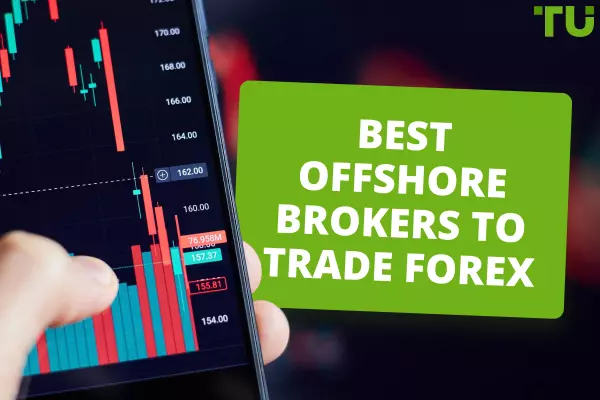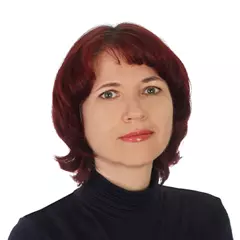6 Best Forex trading screens 2024
It is no folktale attesting that the best trading monitors amplify a trader's trading experience. Most traders use three to five trading monitors to keep up with the markets, but a good monitor can compete.
You shouldn't let a trading monitor prevent you from achieving your financial goals if you understand trading and have a great strategy to implement.
Here is a collection of monitors that span a wide range of costs and aesthetic preferences and will provide your eyes with the extra level of comfort you seek.
1. Samsung CHG90 Series 49“ – Best ultrawide monitor for trading

Samsung CHG90 Series 49“
Brand: Samsung
Screen size: 49 inches
Display resolution: 3840 x 1080 pixels
View angle: 178°(H) / 178°(V)
Aspect ratio: 32:9
Price: $900 - $1100
Samsung's CHG90 is among the best trading monitors you can get in the top online stores or physical markets. If the trading screens you use are not providing the best results, this is the solution.
The Samsung CHG90 has some of the best specifications among popular trading screens. The curved design provides you with an immersive viewing experience by giving you access to all the details and information at a glance.
In 2023, using a massive and incredibly opulent monitor is encouraged if you want to advance your trading career. One of the best day trading monitors with a good price-to-performance ratio is the Samsung CHG90.
👍 Pros
•It has Quantum Dot (QLED) Technology integrated for magnific visuals.
•Input lag and ghosting are reduced, thanks to its 144Hz and 1 ms features.
•Additional trading screens can fit in the available space, and the item is sturdy and has excellent image quality.
•It integrates a High Dynamic Range (HDR) to ensure you don't miss out on your trading activity.
👎 Cons
• It is not available for everybody as some users may find it expensive.
2. Dell U4320Q

Dell U4320Q
Brand: Dell
Screen size: 43 inches
Display resolution: 3840 x 2160
View angle: 178°(H) / 178°(V)
Aspect ratio: 1000:1
Price: $1000 - $1100
The Dell U4320Q is one of the best day trading monitors available in many online shops. This type of screen for trading can show displays from various sources simultaneously. The Picture-by-Picture (PBP) feature allows you to connect up to 4 CPUs and laptops and stream them all simultaneously on this screen.
Because it allows for the tile display of up to 4 applications, it is one of the best monitors for traders. This improves trader productivity and makes it possible for you to compare and view numerous charts and reports simultaneously for your trading analysis.
👍 Pros
•An auto-restore feature ensures that the screen you saw when you first turned it on when you reconnect.
•Additionally, it includes the Zoom Room feature, which improves the Zoom meeting experience.
•You don't need two or three monitors because it enables you to trade with multiple charts open.
•Contains 4K technology, support for the Vesa interface, and excellent color accuracy
👎 Cons
•Without a doubt, this is not something for novices, and a sizable space with a sizable desk is needed for this monitor.
3. LG 34WN80C-B UltraWide Monitor

LG 34WN80C-B UltraWide Monitor
View on Amazon
Brand: LG
Screen size: 34 inches
Display resolution: 3440 x 1440
View angle: 178°(H) / 178°(V)
Aspect ratio: 32:9
Price: $530 - $600
For most purposes, the LG 34WN80C-B UltraWide Monitor is an excellent screen for trading. This should be what every professional trader who loves efficiency should shop for when in the market for quality trading monitors. With this monitor, you have lots of room to multitask applications and enjoy entertainment.
It keeps your eyes on the charts and ensures you get the relevant scopes of trade, making them a top pick among the best day trading monitors.
👍 Pros
•You can divide up your screen like brand-new subdivisions with LG's On-Screen control options by selecting a grid for different apps and windows.
•It includes built-in speakers, light sensors, and a 4-port USB hub.
•It possesses excellent gradient handling and consistently good grayscale.
•The monitor has a great overall height adjustment of 6.3 inches with a spring-loaded mechanism.
👎 Cons
•For such a type of screen for trading, the price is high considering its size.
4. HP X27q 27" WQHD

HP X27q 27" WQHD
Brand: HP
Screen size: 27 inches
Display resolution: 2560 x 1440
View angle: 178°(H) / 178°(V)
Aspect ratio: 16:9
Price: $290 - $320
The new HP X27q 27" WQHD is an all-around comfort pick among the best trading monitors available in various online stores. This distinct model successfully supports trading under all circumstances. If you prefer to trade in vertical portrait mode, it offers a 90-degree rotation.
The HP X27q 27" 16:9 FreeSync 165 Hz HDR IPS Gaming Monitor uses IPS panel technology to provide users with greater comfort and accuracy. Additionally, you can be sure of a good trading experience with this HP VH240a substitute thanks to its 165 Hz refresh rate and 1 ms response time.
You can also use it with top computer monitor stands to further personalize the overall experience.
👍 Pros
•While the IPS panel offers wide viewing angles, AMD FreeSync Premium significantly reduces or eliminates stuttering, juddering, and tearing.
•The display has a vertical tilt range of -5 to 20 degrees, a maximum height adjustment of 3.9 inches, and a 90° rotation to enhance viewing and accessibility.
•The thin edges are excellent as they allow you to set up a second computer monitor just for trading.
👎 Cons
•The eye-ease coating lessens low-blue lights, and the lack of swivel options in the design makes the image look grainier.
5. ViewSonic 32 Inch 1080p Widescreen

ViewSonic 32 Inch 1080p Widescreen
View on Amazon
Brand: ViewSonic
Screen size: 32 inches
Display resolution: 1920 x 1080 pixels
View angle: 178°(H) / 178°(V)
Aspect ratio: 16:9
Price: $190 - $225
Another choice on the list of the best trading monitors you should buy is the 32-inch, 1080p widescreen ViewSonic. A trader can divide this screen into multiple windows and use them simultaneously using the ViewSplit software. Charts and graphs display clearly and from a wide viewing angle, thanks to the premium IPS panel.
The trading monitor manufacturers designed the screen with a bezel-free, ultra-slim design. Additionally, the stand has a beautiful design and takes up little room on your desk. It is inexpensive and has a stunning resolution, incredibly high image quality, and eye care technology.
👍 Pros
•This screen for trading performs the dual roles of an external monitor and a standalone monitor.
It offers excellent eye comfort with its blue light filter and flicker-free technology.
•Because it is VESA compatible, it can be mounted on a rotating stand or mounting arm.
•It combines a SuperClear IPS panel with ViewModel's ideal view settings.
👎 Cons
•The features could have been richer.
6. Samsung J791

Samsung J791
View on Amazon
Brand: Samsung
Screen size: 34 inches
Display resolution: 3440 x 1440
View angle: 178°(H) / 178°(V)
Aspect ratio: 3000:1
Price: $590 - $600
The Samsung J791 is one of the most popular curved trading monitors and comes with several high-end trading features. This includes an Intel Thunderbolt 3 display splitter and HDR support. It is one of the best stock monitors on the market right now that incorporates a 1 ms response time and eye-saver mode.
The large 32" curved glass display will ensure that you can see all the information you require and stay up to date with the state of the market.
The Samsung C34J791 is a respectable monitor for different uses. Unfortunately, it has poor viewing angles despite having a large ultrawide screen with plenty of resolution that is good for multitasking. But it is very responsive to your commands, but you shouldn't put it in a room with a lot of light because it can't block the glare.
👍 Pros
•The input lag, resolution, and size are exceptional.
•It offers more horizontal workspace for working or playing because it is so wide.
•It serves as a Thunderbolt dock and displays images from two inputs.
👎 Cons
•Because of LCD leakage and the low contrast, the blacks are gray.
•Unlike the average display, it has a much more accurate color, but the image suffers from angled viewing.
7 Best Trading computers under $2.500


















